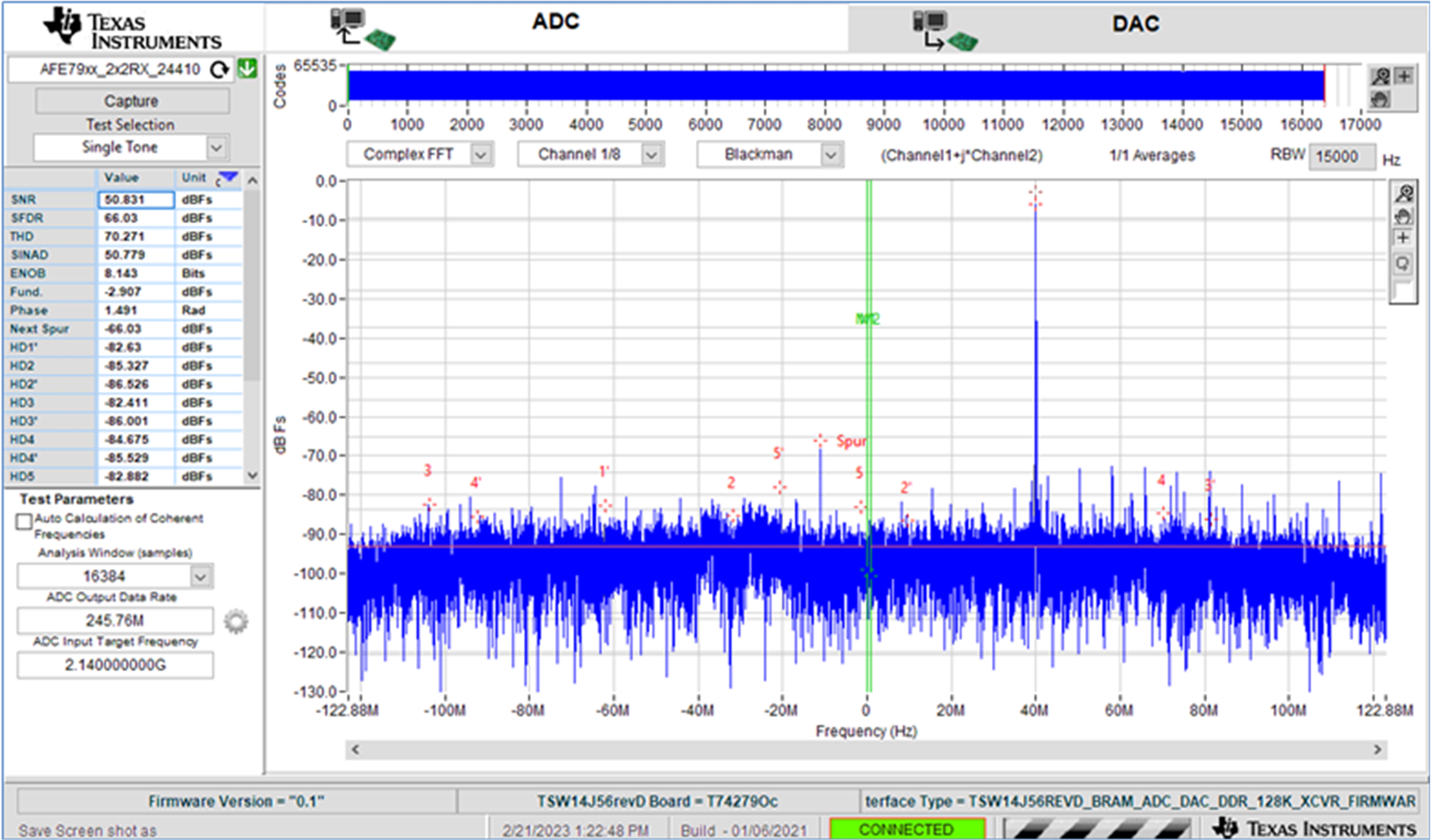TIDUF71A March 2024 – November 2024
- 1
- Description
- Resources
- Features
- Applications
- 6
- 1System Description
- 2System Overview
- 3Hardware, Software, Testing Requirements, and Test Results
- 4Design and Documentation Support
- 5About the Author
- 6Revision History
3.6.3 RXA/B ADC Test Results
The config file also has RXA and RXB channels configured with the NCO set to 2.1GHz. Inject a tone at 2140MHz. For proper SNR performance, the signal must be filtered. Adjust the amplitude of the fundamental signal to read approximately -3dBFS. This is likely a signal generator power around -10 to -12dBm.
Figure 3-5 shows the FFT spectrum from the single tone capture. SNR performance is around 51dBFS. SFDR performance is around 66dBFS. HD2,HD3 performance is very good at less than 85dBFS. Note, TXA and TXB are disengaged to eliminate any bleed-through component impacting the FFT capture.
 Figure 3-5 RXA/B ADC FFT Spectrum
Figure 3-5 RXA/B ADC FFT Spectrum